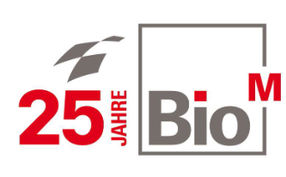To successfully treat intoxications caused by consumer products, the formulations must be known
BfR and its Committee "Assessment of Intoxications" propose new labelling for identification purposes in emergencies
If a child swallows a cleaning product by mistake, rapid help can be life-saving. In the case of accidents involving household chemicals, doctors have to know which substances the product contains. Only then can they give targeted treatment. Frequently, however, they only have incomplete information because clear identification of products via their commercial name is problematic. "We urgently need a new product labelling element that enables the components to be quickly identified when adverse reactions occur and above all in emergencies", says Professor Dr. Dr. Andreas Hensel, President of the Federal Institute for Risk Assessment (BfR). Based on the preliminary work by the BfR Committee "Assessment of Intoxications", the Institute has now come up with a uniform, clearly visible identification element for consumers.
Intoxications happen every day; mostly they are accidents with household products involving children. The poison information and treatment centres receive approximately one million calls a year in Europe. In 20 to 40 percent of the cases, it is very difficult to identify the exact formulation. The manufacturers of chemical products like pesticides, detergents and cleaning agents do send details of their formulations to BfR so that they are available for emergencies. However, it is often difficult for the attending doctor to determine which product caused the poisoning of the consumer.
The information on the packaging often doesn’t really help either. Labels frequently carry confusing product information encompassing “Corporate Identity” elements, safety instructions, warnings, trademarks, advertising elements, logistics labelling, bar codes, environmental and disposal labelling, instructions for use - and sometimes in several languages. What makes this situation even more difficult is that manufacturers can change their product formulations without the product being given a new commercial name.
Based on the preliminary work by the BfR Committee “Assessment of Intoxications” and the European Standard EN 15178 “Elements for the identification of products in emergency enquiries”, initiated by BfR, the Institute proposes a uniformly structured identification element on the labels. Close to the barcode there should be an “i” symbol which stands for “Information”, followed by the company code, a formulation code and the new encoded GHS hazard symbol. GHS stands for “Globally Harmonized System of Classification and Labelling of Chemicals”. The innovative product labelling could also be used on the international level.
The manufacturers of chemical products intended for consumers can now use the new labelling system for the mandatory notification of chemical products to BfR and also use the new identification element on their packaging. It not only facilitates the exact identification of the formulation in the event of emergency enquiries but also offers manufacturers advantages. Compared with merely indicating the commercial names, it can help to reduce errors during ordering and clearly assign complaints.
Other news from the department politics & laws

Get the analytics and lab tech industry in your inbox
By submitting this form you agree that LUMITOS AG will send you the newsletter(s) selected above by email. Your data will not be passed on to third parties. Your data will be stored and processed in accordance with our data protection regulations. LUMITOS may contact you by email for the purpose of advertising or market and opinion surveys. You can revoke your consent at any time without giving reasons to LUMITOS AG, Ernst-Augustin-Str. 2, 12489 Berlin, Germany or by e-mail at revoke@lumitos.com with effect for the future. In addition, each email contains a link to unsubscribe from the corresponding newsletter.












































